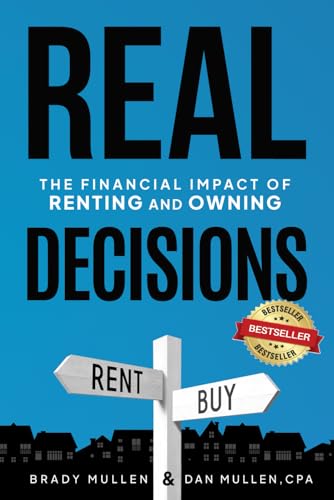Understanding the Affordability Crisis
The housing affordability crisis has emerged as a pressing issue that affects millions of individuals and families across various demographics, particularly young adults and renters. This crisis is characterized by a significant disconnect between rising housing costs and stagnant wage growth, leading to increased financial strain. According to reports, rents have soared by over 30% in many urban areas within the last decade, while median household incomes have struggled to keep pace, growing by only 11% during the same period. This trend contributes to a daunting environment for potential renters and aspiring homeowners alike.
The current landscape leaves many young adults, including those just beginning their careers, facing an uphill battle in securing affordable housing. A study revealed that nearly 50% of renters aged 24 to 34 are spending more than 30% of their income on housing, which many experts consider unsustainable. The concept of “housing cost burden” highlights this struggle; when individuals or families allocate a disproportionate amount of their income to housing expenses, it limits their ability to afford essential items, save for the future, or invest in long-term assets like homeownership.
In addition to renters, prospective homeowners are equally challenged by the affordability crisis. As property values continue to soar, first-time homebuyers often find themselves priced out of the market. A significant barrier includes down payment requirements and closing costs, which can amount to tens of thousands of dollars, further complicating the path to ownership. This situation has led many to seek alternative housing solutions, as traditional routes seem increasingly unattainable.
Understanding the intricacies of this affordability crisis is crucial, as it sets the stage for the exploration of innovative housing options. As challenges mount, recognizing the underlying causes will enable both individuals and policymakers to seek solutions effectively, ensuring that everyone has access to stable and affordable living arrangements.
The Impact of High Rent and Stagnant Wages
The housing crisis has become a significant point of concern for many individuals, particularly for millennials and younger generations. The mounting pressures of high rent combined with stagnant wages have created an increasingly challenging financial landscape. The average cost of renting a home has risen dramatically, often outpacing income growth in many regions. According to recent studies, rent inflation has consistently surpassed wage increases over the past decade, leading to a widening gap between what individuals earn and what they must pay for housing.
This economic discrepancy can be particularly stark for those entering the job market. While wages for many entry-level positions have struggled to keep up with the rising cost of living, rental prices have soared. For many young adults, the dream of securing affordable housing is fading, resulting in widespread financial strain and uncertainty. In various cities across the country, it is not uncommon to find individuals spending more than 30% of their income on rent—an amount that often exceeds past affordability benchmarks. This situation only exacerbates the difficulties of saving for other important life milestones, such as purchasing a home or investing in education.
The challenge is further compounded by the differences in economic conditions across various regions, with urban areas particularly affected. High rent costs paired with limited wage growth create a cycle of financial instability, leading many individuals to consider alternatives, such as shared living arrangements or even relocating to less expensive areas. The impacts are felt on a broader scale, influencing consumer spending and overall economic growth. As the rental market continues to evolve alongside these economic realities, the need for effective solutions becomes increasingly urgent, shaping the discourse around housing affordability, economic policy, and social equity.
Exploring Creative Alternatives
As the cost of living continues to rise, many individuals and families find themselves in a challenging housing situation, often unable to afford traditional rent or mortgage payments. However, there are several creative alternatives that can alleviate the burden of escalating housing costs. These innovative solutions not only provide immediate relief but can also pave the way for more sustainable living arrangements.
One noteworthy option is co-housing or communal living. This approach involves a group of individuals or families living together in a shared space, such as a large house or an adjoining series of apartments. By pooling resources, residents can significantly reduce their individual expenses while enjoying the benefits of a close-knit community. This model fosters cooperation and sharing of household tasks, making it an appealing choice for those seeking both affordability and companionship.
Another alternative gaining traction is house hacking. This involves renting out a portion of one’s home, such as a basement suite or a spare room, to generate income that can be used to cover mortgage or rent payments. This method not only mitigates housing costs but also allows homeowners and renters to optimize their living spaces effectively.
For individuals interested in more flexible options, mobile and tiny homes present a viable alternative. These smaller, often eco-friendly dwellings are generally less expensive to build or purchase and can be placed in various locations, allowing residents to choose their environment based on personal preference or job opportunities. Furthermore, the minimalist lifestyle associated with tiny homes promotes financial savings and a reduced ecological footprint.
In summation, exploring these innovative housing solutions can significantly ease the pressure of high rental and purchasing costs. Options such as co-housing, house hacking, and mobile or tiny homes offer flexibility and affordability, thereby presenting appealing pathways for those struggling to find traditional housing solutions.
Co-Living Spaces: A Community Approach
Co-living spaces represent an innovative housing solution designed to address the escalating challenges associated with renting or purchasing a home. Essentially, co-living involves individuals sharing a residential building, which often consists of private bedrooms paired with communal living areas, kitchens, and recreational spaces. This arrangement promotes not only affordability but also fosters a sense of community among its residents.
The primary advantage of co-living spaces is their cost-effectiveness. With the rising prices of real estate, many individuals, particularly young professionals and students, find it increasingly difficult to secure affordable accommodations. By sharing the financial burden of rent and utilities, residents of co-living arrangements can save substantial amounts each month. Additionally, many co-living spaces offer flexible leasing terms, making it easier for residents to move according to their needs without being tied to long-term contracts.
Beyond financial benefits, co-living environments offer a chance for social engagement. In today’s fast-paced world, individuals often experience feelings of isolation, especially in urban settings. Co-living spaces encourage interaction and collaboration among residents, frequently hosting community events, workshops, or group activities to enhance social bonds. This can lead to lasting friendships and networks that are valuable in both personal and professional contexts.
Noteworthy examples of successful co-living arrangements include WeLive in New York City and The Collective in London. These facilities feature well-designed shared spaces with modern amenities, catering to the needs of their inhabitants while cultivating a vibrant lifestyle. However, potential residents should consider both the pros and cons of co-living. While affordability and community integration are significant benefits, potential downsides include privacy concerns and varying lifestyles among roommates. Balancing these factors is essential for those contemplating this alternative housing model.
Rent-to-Own Models: A Path to Ownership
Rent-to-own agreements offer a viable alternative for individuals aspiring to homeownership without the immediate financial burden of a down payment. Under this model, a tenant pays both rent and an additional amount that contributes toward the eventual purchase of the home. Typically, these contracts span several years, during which the tenant has the option to buy the property at a predetermined price. This arrangement can be particularly beneficial for those who are not yet financially prepared to buy a home outright, allowing them to secure a place to live while working towards ownership.
One of the primary advantages of rent-to-own agreements is the potential for building home equity. As tenants pay their monthly rent, a portion is often set aside as a credit toward the purchase price, effectively allowing them to save while living in the home. This model can be particularly appealing in a fluctuating housing market, as it often locks in the purchase price, protecting the tenant from rising property values. For instance, a tenant who enters a rent-to-own agreement for a home valued at $250,000 may find that, after three years, the market price has risen to $300,000. In this case, they can still purchase the home at the agreed-upon price, providing substantial financial benefit.
However, it is crucial to recognize that rent-to-own agreements also come with specific risks. Tenants should thoroughly review the contract terms, as these agreements can vary significantly. For example, missing rent payments or failing to secure financing by the end of the rental term can result in the loss of built equity. Additionally, some agreements may require substantial upfront fees or higher-than-average rental costs. Therefore, prospective tenants should carefully consider their financial situation and the terms of the agreement when exploring this pathway to homeownership.
Understanding Deposit Insurance as a Solution
Deposit insurance is a financial product designed to protect tenants and landlords from the risk associated with security deposits. It serves as an alternative to traditional cash deposits, allowing renters to pay a small fee to an insurance company instead of depositing a significant amount of money upfront. This not only eases the financial burden on renters but also simplifies the process for landlords who often face challenges in handling security deposits.
The main benefit of deposit insurance for renters is that it significantly reduces the initial cost of moving into a rental property. Instead of paying a hefty security deposit, renters can obtain a policy that covers any potential damages or unpaid rent during their tenancy. This system ensures that landlords are protected while making housing more accessible to those who might struggle to come up with a large sum of money. Additionally, for landlords, deposit insurance minimizes the risk of losing out on potential funds due to tenant-caused damages.
Several companies specialize in providing deposit insurance services, including Rhino and LeaseLock. These firms offer various plans that cater to different rental scenarios, often charging renters a small monthly fee that is considerably lower than a traditional deposit. For instance, Rhino charges a fee based on the amount of coverage desired, making it a flexible choice for many tenants. However, while this innovative solution presents numerous advantages, it is essential to be aware of potential drawbacks. For example, in some cases, not all damages might be covered under a deposit insurance policy, leading to disputes between landlords and tenants over responsibility. Therefore, both parties should thoroughly understand the terms of the insurance agreement before moving forward.
Fractional Ownership: A New Approach to Real Estate
Fractional ownership has emerged as a viable alternative to traditional property ownership, particularly for those who find themselves unable to afford the high cost of renting or buying. This innovative model allows multiple parties to collectively own a share of a property, significantly reducing the financial burden on individuals seeking real estate investment opportunities. By combining resources, prospective owners can gain access to premium properties that may otherwise be beyond their reach.
One of the most significant advantages of fractional ownership is the reduction in upfront costs. Instead of shouldering the entire financial responsibility for a property, individuals can invest a fraction of the total cost, thus minimizing their risk and maintenance obligations. This shared investment approach has gained traction in various sectors, including vacation homes, commercial real estate, and even luxury assets like yachts and private jets. Moreover, fractional ownership often comes with less demanding commitments compared to traditional ownership, as the management of the property can be handled by professional companies, allowing owners to enjoy their investment without the hassle of day-to-day management.
However, it is important to consider the potential downsides of this model. Fractional ownership arrangements can sometimes involve complicated legal structures, which may lead to conflicts among co-owners. Furthermore, the resale of fractional interests can prove challenging, as potential buyers may be few and far between. Additionally, individual owners may have limited usage rights, depending on the terms of the agreement. It is crucial for potential investors to perform due diligence and understand the specifics of each offering before committing to a fractional ownership initiative.
Several platforms have arisen to facilitate fractional ownership, including Pacaso and RealtyMogul. These companies bridge the gap between property ownership and investment, providing individuals with opportunities to diversify their asset portfolio in a more manageable and accessible manner. As the real estate landscape continues to shift, fractional ownership may represent a practical solution for those looking for alternatives to traditional property acquisition.
House Hacking: Turning Your Space into an Asset
House hacking is a contemporary approach that allows homeowners and renters to generate extra income by renting out a portion of their living space. This practice typically involves leasing out a room, basement, or even an entire unit within a multi-family property. The primary aim is to alleviate the financial burden of mortgage or rent payments, making housing more affordable for those facing economic challenges.
One of the most significant benefits of house hacking is that it transforms an individual’s home into a revenue-generating asset. By renting out part of their dwelling, individuals can effectively reduce their housing costs, which can offset or even cover monthly mortgage payments. This strategy can be particularly appealing in cities where housing prices are soaring, allowing residents to maintain their living arrangements without sacrificing financial stability.
There are various ways to implement house hacking, each tailored to different situations and comfort levels. For instance, homeowners can list a spare room on platforms such as Airbnb for short-term rentals, or seek long-term roommates for a more stable income. Renters may consider subletting a portion of their rental space if permitted by their lease. It’s also possible to explore converting a garage or attic into a separate living space, provided it adheres to local zoning laws.
Managing tenant relationships is a crucial aspect of successful house hacking. Clear communication and established house rules can mitigate common issues, helping to foster a positive living environment. It is also advisable to screen potential tenants carefully to ensure a good match. Creating a written rental agreement can protect both parties and clarify expectations. Overall, house hacking can be a viable strategy for those unable to afford traditional housing costs, providing increased financial freedom and housing flexibility.
Evaluating Which Option Works for Your Lifestyle
Determining the most suitable housing option is crucial, especially when financial constraints may limit choices between renting and buying. To navigate this decision effectively, it is beneficial to reflect on various personal factors including your lifestyle, financial goals, and long-term plans. Begin by asking yourself several key questions: What are your job stability and income outlook? How long do you anticipate living in the area? What are your preferences for flexibility versus stability?
Next, create a scorecard that evaluates each housing option based on your answers. Assign a weight to each question based on its importance to you, and rate each option on a scale (for example, 1 to 5) accordingly. For instance, if job stability is paramount, you may assign it a higher weight and rate renting favorably if it offers more flexibility. Similarly, consider factors such as maintenance responsibilities, community amenities, and social ties when assessing how well each option aligns with your lifestyle.
Additionally, financial implications must be scrutinized. Examine your current savings, monthly budget, and any debts to understand what you can realistically afford. Renting tends to have lower upfront expenses, while buying offers long-term investment potential. Take into account the total cost of ownership, including maintenance fees, property taxes, and potential appreciation or depreciation in property value.
Ultimately, aligning your housing choice with your lifestyle, financial capability, and future aspirations is paramount. By systematically evaluating each option through a structured approach, you can make a more informed decision that suits your unique circumstances.
Rethinking Housing: An Empowering Call to Action
In today’s rapidly changing housing landscape, it is essential to broaden our perspectives on what housing means. Rather than viewing a home solely as a financial investment that must be obtained through traditional methods such as renting or buying, we should consider it as an adaptable aspect of our lives. This shift in mindset can transform the way we approach residential stability, enabling us to explore innovative housing solutions that suit our unique circumstances.
Many individuals feel disheartened by escalating rents and soaring home prices. However, by thinking creatively, you can uncover numerous alternatives that may provide affordability and satisfaction. For instance, co-housing arrangements are gaining traction, where groups of individuals share space and resources. This communal living approach fosters connections and significantly reduces individual costs related to housing, all while creating a supportive community environment.
Moreover, consider the potential of remote work enabling the exploration of more affordable locations. With flexible job arrangements becoming more commonplace, individuals can seek housing further afield, where property prices are significantly lower. This not only enhances financial viability but also provides new experiences and personal growth opportunities. Consulting housing authorities for assistance with programs aimed at financial relief, subsidies, or even shared equity schemes is another proactive step towards achieving stability.
It is crucial to stay informed about potential changes in the housing market and to harness opportunities as they arise. Remaining open to non-traditional housing options can lead to inventive solutions that meet personal needs while alleviating financial concerns. By approaching housing strategically, we empower ourselves to make decisions that align with our values and circumstances. Adapting to changing environments within the housing sector is not merely a necessity; it is also a chance to redefine how we perceive home for ourselves and our communities. Together, let us embrace this dynamic journey and explore the diverse avenues available to secure housing that truly fits our lives.
Feeling priced out of rent and homeownership? You’re not alone — but you’re not out of options.
These eye-opening books reveal creative, practical ways to rethink where and how you live. From co-living and house hacking to rent-to-own strategies and deposit-free rentals, each title below offers smart solutions for navigating today’s housing crunch. Whether you’re a student, young professional, or just tired of watching your paycheck vanish into rent, these reads will help you take control and live smarter.
Click a book below to unlock housing strategies that work — even when the market doesn’t.





